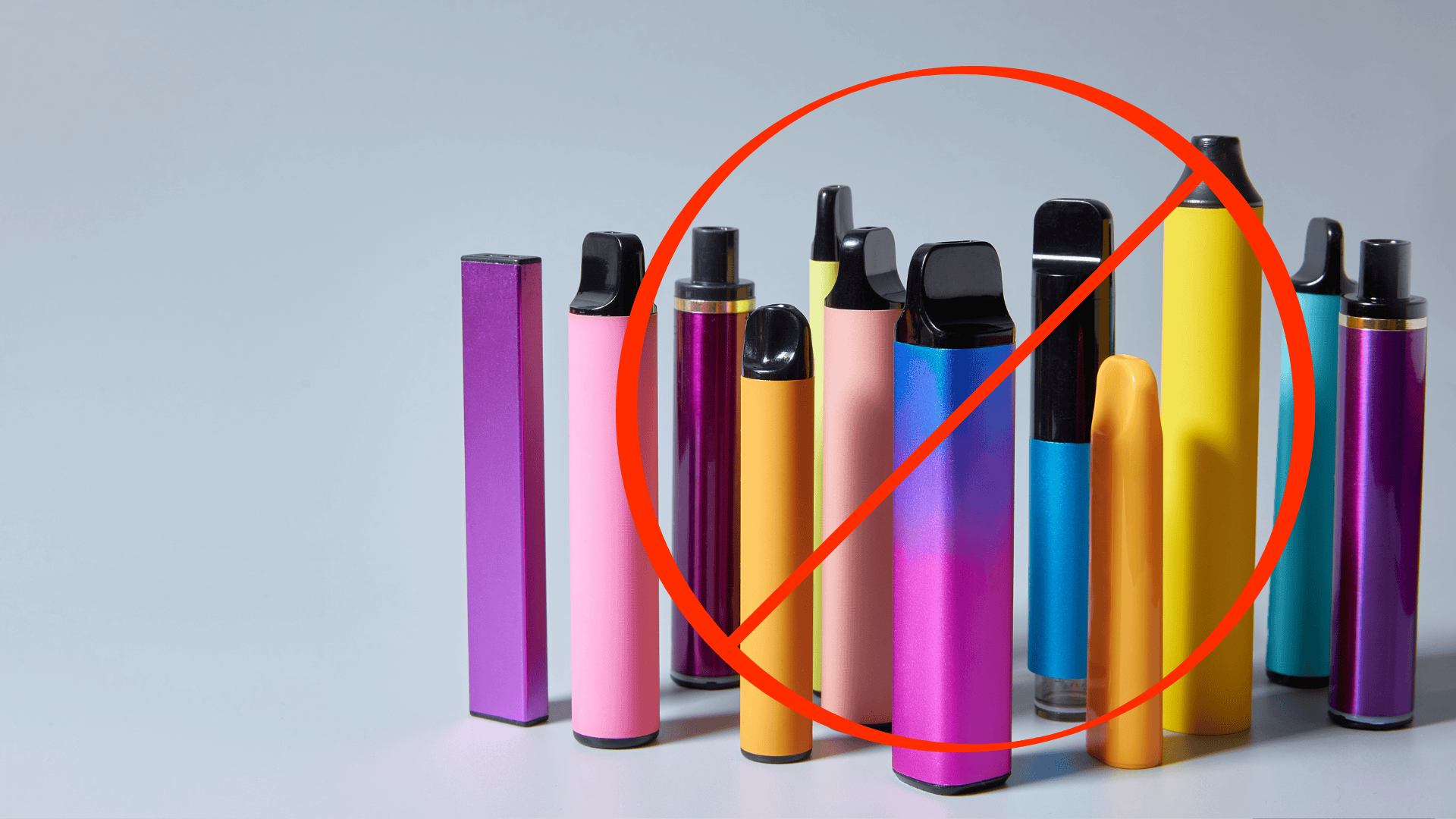For decades, tobacco has been perceived as a tool to calm anxiety and manage stress. Many smokers claim that a cigarette “calms them down” during tense moments. However, scientific evidence shows that this effect is related chiefly to alleviating nicotine withdrawal symptoms rather than a truly sustained anxiolytic effect (1).
This article analyzes the interaction between anxiety, stress, and smoking; the neuroendocrine basis of this relationship; and the clinical and therapeutic implications of cessation.

Anxiety, Stress, and Nicotine Withdrawal
Anxiety is an adaptive emotion that prepares the body to face a perceived threat, with physiological symptoms (tachycardia, sweating), cognitive symptoms (worry, intrusive thoughts), and behavioral symptoms (hypervigilance). When excessive or persistent, it becomes a clinical disorder (2).
Stress is understood as the physiological and psychological response to external or internal demands perceived as excessive. It involves the activation of the hypothalamic–pituitary–adrenal (HPA) axis, resulting in cortisol release, and can be either acute or chronic (3).
Nicotine withdrawal syndrome includes irritability, restlessness, craving, and difficulty concentrating—symptoms often confused with anxiety, although they derive from the reduction of nicotine levels in the brain.
Tobacco Use, Stress, and Anxiety
The relationship between tobacco and anxiety is bidirectional: stress increases the likelihood of initiating or intensifying consumption, and tobacco, far from providing sustained relief, exacerbates anxious symptoms. Studies in Finland, involving more than 46,000 workers, showed that those reporting higher work stress were more likely to smoke and to do so in greater quantities (Kouvonen, Kivimaki, Virtanen, Pentti, & Vahtera, 2005).
Smoking prevalence is more than twice as high in people with mental disorders compared to the general population, particularly among those with panic disorder, generalized anxiety disorder, social phobia, and post-traumatic stress disorder (Kalman, Morissette, & George, 2005; Lasser et al., 2000).

Perceptions of Relief and Conditioning
Nicotine initially produces a subjective feeling of relief due to the activation of the mesolimbic dopaminergic system, which is responsible for producing reward and well-being, along with a transient improvement in attention and perception of control. The cigarette becomes an emotional coping tool. However, this relief is short and misleading: what the smoker interprets as reduced anxiety is actually the disappearance of withdrawal symptoms.
Neuroendocrine and Behavioral Bases
Nicotine exerts multiple effects on neuroendocrine systems:
- Adrenergic system: stimulates nicotinic receptors, increasing the release of adrenaline and noradrenaline, which raises heart rate, blood pressure, and sympathetic response.
- Cortisol and HPA axis: smokers present higher baseline cortisol levels, reflecting chronic hyperactivation of the stress axis.
- Conditioning: smoking reinforces the association between temporary withdrawal relief and smoking behavior, perpetuating dependence.
In short, smokers have more circulating stress hormones. Through conditioning, they have learned that tobacco use “calms” sensations they attribute to anxiety but which are actually withdrawal symptoms.
Anxiety After Tobacco Cessation
During the first weeks of abstinence, anxiety levels tend to rise. However, after 2–4 weeks, studies show that anxiety and stress decrease to levels equal to or lower than in active smokers. Research also reports a reduction in anxiolytic use after cessation, suggesting an additional benefit for mental health and reduced polypharmacy (4)(5).
Strategies to Manage Anxiety After Cessation
Proper anxiety management is essential to sustain abstinence. Strategies include:
- Pharmacological treatment: nicotine replacement therapy, bupropion, and varenicline.
- Psychological interventions: cognitive-behavioral therapy, relaxation techniques, mindfulness, and problem-solving training.
- Behavioral and social support: motivational counseling, support groups, and replacing rituals with healthy behaviors.

Anxiety Sensitivity (AS) and Distress Tolerance (DT)
Anxiety sensitivity (AS) is defined as the fear of physical, cognitive, or social sensations associated with anxiety due to the belief that they may have serious negative consequences (e.g., loss of control, physical harm, or social rejection).
In the context of smoking, Smokers with high AS interpret withdrawal symptoms (palpitations, nervousness, difficulty concentrating) as dangerous. This leads to greater distress, lower tolerance to abstinence, and higher relapse risk. Elevated AS has been linked to more intense nicotine dependence, greater difficulties during cessation, and the perception that quitting is harder (Zvolensky, Farris et al., 2014) (6)(7).
Distress tolerance (DT) refers to an individual’s perceived ability to endure negative emotional states or unpleasant internal sensations.
Low DT implies difficulty resisting emotional or physiological discomfort, increasing the likelihood of using tobacco as a coping strategy. Recent studies show that DT consistently predicts long-term abstinence, even more strongly than AS (8).
Clinical Interventions for AS and DT in Cessation
Integrating specific techniques to address anxiety sensitivity and distress tolerance into smoking cessation programs strengthens smokers’ resilience against emotional and physiological distress. Teaching patients that sensations of anxiety and withdrawal are temporary and tolerable breaks the cycle of dependence and facilitates sustained abstinence.
The comprehensive approach includes:
- Psychoeducation
- Explain to patients the difference between anxiety, stress, and withdrawal symptoms.
- Normalize discomfort during the first weeks of cessation.
- Explain to patients the difference between anxiety, stress, and withdrawal symptoms.
- Cognitive-Behavioral Therapy (CBT)
- Cognitive restructuring of catastrophic thoughts (“If I feel palpitations, I’m going to faint”).
- Interoceptive exposure: training patients to tolerate physical anxiety symptoms (controlled hyperventilation, exercise) to reduce AS.
- Emotional Regulation Training and Mindfulness
- Mindfulness and meditation to accept sensations without automatically reacting with a cigarette.
- Acceptance and Commitment Therapy (ACT) techniques to increase DT.
- Mindfulness and meditation to accept sensations without automatically reacting with a cigarette.
- Distress Tolerance Techniques
- Use of positive distraction exercises (physical activity, relaxation techniques).
- Graduated exposure to stressful situations without smoking.
- Group Interventions and Social Support
- Sharing experiences of anxiety and coping strategies with other smokers in cessation.
- Positive reinforcement and building self-efficacy.

E-Cigarettes and Stress in Youth
E-cigarette use has spread among young people as a supposed tool to manage anxiety and stress. Surveys show that 4 out of 5 adolescents started vaping to relieve emotional distress. However, this perception reflects the same nicotine withdrawal cycle, reinforced by tobacco industry marketing (9).
Conclusion
The link between tobacco, anxiety, and stress is complex and sustained in a vicious cycle of dependence. Although nicotine may offer initial relief, it increases vulnerability to stress in the long term. Cessation leads to better mental health, reduced stress, and less use of anxiolytics. A comprehensive approach to post-cessation anxiety, using pharmacological, psychological, and social treatments, is key to improving quality of life and increasing sustained abstinence rates.
References
- Moylan et al. Cigarette smoking, nicotine dependence and anxiety disorders: a systematic review of population-based, epidemiological studies. BMC Medicine 2012, 10:123. http://www.biomedcentral.com/1741-7015/10/123
- Mae Wood, C. Anxiety and Tobacco. Intervención Psicosocial. Vol. 18, No. 3, 2009, pp. 213–231.Moylan, S. et al. How cigarette smoking may increase the risk of anxiety symptoms and anxiety disorders: a critical review of biological pathways. Brain and Behavior 2013; 3(3): 302–326.
- Peter Hajek, Tamara Taylor, Hayden McRobbie. The effect of stopping smoking on perceived stress levels. Addiction, Volume 105, Issue 8, August 2010.
- Kim et al. The impact of smoking cessation attempts on stress levels. BMC Public Health (2019) 19:267.
- G. Aonso-Diego et al. Anxiety Sensitivity and Tobacco Use: A Transdiagnostic Approach. Clínica y Salud (2023).
- Martínez-Vispo, C. Anxiety Sensitivity and Tobacco Use: A Review. Ansiedad y Estrés 22 (2016) 118–122.
- Schlam, T. Anxiety Sensitivity and Distress Tolerance in Smokers. Nicotine & Tobacco Research, 2020, Vol. 22, No. 1.
- Truth Initiative. Many young people turn to nicotine to deal with stress, anxiety and depression, but don’t know it may be making them feel worse. Oct. 2021. https://truthinitiative.org/research-resources/emerging-tobacco-products/many-young-people-turn-nicotine-deal-stress-anxiety
